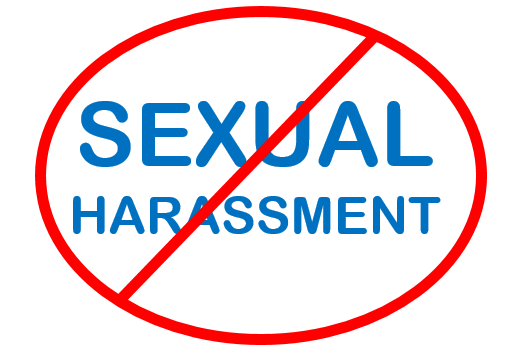A few months back, a woman district Judge in Madhya Pradesh had made allegations of sexual harassment against a sitting judge of the MP High Court. The Chief Justice of the MP High Court had initiated an inquiry into the said allegations. However, the woman judge, who had resigned after making those allegations of sexual harassment, had declined to participate in the said inquiry. She had filed a writ petition in the Supreme Court for conducting a proper inquiry in this matter. Now, by a detailed judgement dated 18 December 2014, two-judge bench of the Supreme Court (consisting of Justice Jagdish Singh Khehar and Justice Arun Mishra) has quashed the aforesaid inquiry initiated by the MP High Court.

The Supreme Court has held that the only limited authority available with the Chief Justice of the MP High Court in this matter was to determine whether or not a deeper probe was required in the matter. It held that the Chief Justice of the High Court travelled beyond his authority by also constituting a two-judge committee to make in-depth probe into the matter. In this regard, the Supreme Court held as under:
“The Chief Justice of the High Court, by constituting a “two-Judge Committee”, commenced an in-depth probe, into the allegations levelled by the petitioner. The procedure adopted by the Chief Justice of the High Court, forms a part of the second stage (contemplated under steps four to seven – elucidated in paragraph 37, hereinabove). The second stage of the “in-house procedure” is to be carried out, under the authority of the Chief Justice of India. The Chief Justice of the High Court by constituting a “two-Judge Committee” clearly traversed beyond his jurisdictional authority, under the “in-house procedure”.”
Thus, the Supreme Court held that the detailed inquiry into this matter was required to be conducted as per the orders of the Chief Justice of India, and that the Chief Justice of MP High Court had no such authority in this regard.
It is pertinent to point out that this detailed inquiry was required to be conducted by a committee of two sitting Chief Justices of High Courts and one Judge of a High Court. Such three-judge committee was required to be constituted by the Chief Justice of India. The Supreme Court noted that by constituting a two-judge inquiry committee consisting of two judges of MP High Court, the Chief Justice of the MP High Court had usurped the investigative process assigned to the aforesaid “three-member Committee”.
In this way, the Supreme Court quashed the aforesaid two-judge inquiry committee constituted by the Chief Justice of the MP High Court. It has now left the matter to be decided by the Chief Justice of India regarding constitution of a proper inquiry committee and regarding the stage at which this inquiry should commence.
In addition to this, the Supreme Court also directed the Chief Justice of MP High Court to divest the concerned judge of MP High Court (against whom allegations have been made), of the administrative and supervisory control vested in him, by observing as under:
“In order to ensure, that the investigative process is fair and just, it is imperative to divest the concerned judge (against whom allegations have been levelled), of his administrative and supervisory authority and control over witnesses, to be produced either on behalf of the complainant, or on behalf of the concerned judge himself. The Chief Justice of the High Court is accordingly directed to divest respondent no.3 – Justice ‘A’, of the administrative and supervisory control vested in him, to the extent expressed above.”
It is submitted that while the aforesaid direction given by the Supreme Court to divest the concerned judge of his administrative and supervisory control vested in him is a welcome direction to ensure a fair and just inquiry, it would have been better if the concerned judge of MP High Court was also divested of the judicial work allotted to him until the conclusion of such inquiry.
Significantly, the Supreme Court further directed that the Chief Justice of the High Court, having assumed a firm position, in respect of certain facts contained in the complaint filed by the woman judge, ought not to be associated with the “in-house procedure” in the present case. Accordingly, the Supreme Court observed that the Chief Justice of India may reinitiate the investigative process, under the “in-house procedure”, by vesting the authority required to be discharged by the Chief Justice of the concerned High Court, to a Chief Justice of some other High Court, or alternatively, the Chief Justice of India may himself assume the said role.
So, let us hope that a new inquiry committee will be constituted by the Chief Justice of India that can conduct a fair and just inquiry in this matter, without getting influenced by the position of the concerned judge of MP High Court against whom allegations of sexual harassment have been made by the woman judge. At stake is the capability of the “in-house procedure” of the judiciary to conduct an impartial, just and fair inquiry against a sitting judge, and thereafter to take or recommend effective action if the allegations are found to be true.
The aforesaid judgment dated 18 December 2014 is available for download at this link.
[Note: We, at Tilak Marg, do not wish to disclose the names of the woman judge who had filed the complaint, and also the name of the sitting judge of the MP High Court against whom such allegations were made. It may be pointed out that in the aforesaid judgment, the Supreme Court has consciously not disclosed their names. As a responsible website, we follow the methodology adopted by the Supreme Court, and do not wish to disclose the names, though some other websites have chosen to disclose these names.]

